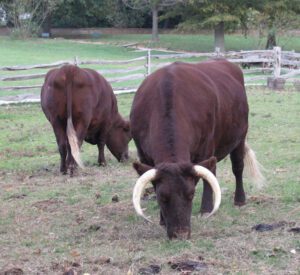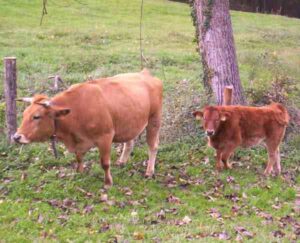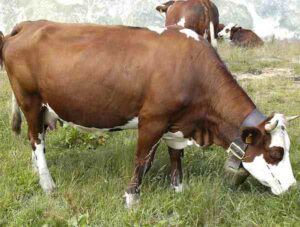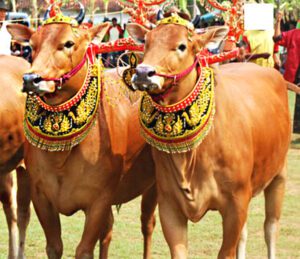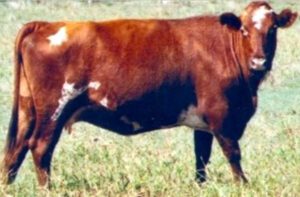The Dexter cattle are a dual-purpose breed of cattle which are raised for both milk and meat production. It is a miniature cattle breed originating in Ireland.
The breed is about half the size of a traditional Hereford cattle, about one third the size of Friesian and is the smallest of the European cattle breeds.
The Dexter cattle actually originated in southwestern Ireland from which it was brought to England in 1882.
They were almost disappeared in Ireland, but was still maintained as a pure breed in a number of small herds in England and also in the United States.
Exact origin of the breed is quite obscure, but common assumption has been that these animals are a result of cross between the Kerry and some other breeds (probably the Devon cattle).
They have many similarities with the Kerry cattle, and many people considered Dexters to be a dwarf type of Kerry for many years. However, recent bloodtyping research has determined that the Dexter and the Kerry cattle, though closely related are genetically distinct breeds.
Currently total number of the Dexter cattle is around 2,000 in Ireland. And it’s a rare breed, but is now considered a recovering breed by The Livestock Conservancy. Read more information about the breed below.
Dexter Cattle Characteristics
Dexter cattle are small sized animals. They have wide and deep body with well-rounded hindquarters. They appear in three colors which are red, brown and black.
They should not have any white markings except for some very minor white markings on the belly/udder behind the navel and some white hairs in the tail switch.
They can be either horned or or polled. The horned version has small and thick horns which grow upward with a forward curve on the bulls and upward curve on the cows. They have relatively short legs.
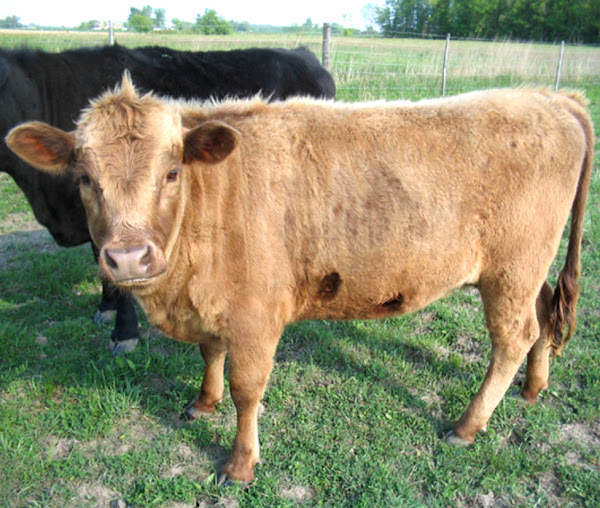
Average live body weight of the mature cows is around 350 kg. And the mature bulls on average weight around 450 kg. Photo and info from Wikipedia.
Uses
Dexter cattle are dual-purpose animals. They are used for both milk and meat production.
Special Notes
The Dexter cattle are very hardy, forage-efficient animals and they are very friendly in nature. They are usually docile in behavior and have pleasant temperaments.
As an old mountain cattle breed, they are well-adapted to the harsh landscape of Ireland’s rocky fields. They are often known to eat weeds and unwanted vegetation, and can thrive on low-quality pastures.
The cows are great mothers and they can protect their calves from predators very well. They have less issues in calving and usually calve quite easily. The cows can produce up to 3,500 kg of milk per lactation.
Their milk is of good quality containing about 4 percent butterfat and about 3.5 percent protein. Meat of the Dexter cattle is also of very good quality with good marbling. The small size of the carcass makes the breed an excellent choice for use in direct marketing programs.
They have sometimes been marketed as a novelty or ornamental breed. Review full breed profile of the Dexter cattle in the following chart.
| Breed Name | Dexter | |
| Other Name | The Poorman’s Cow | |
| Breed Purpose | Dual-purpose (milk and meat) | |
| Special Notes | Good milk quality, well adapted to native climates, good for meat, very hardy, good behavior, docile, calm temperament, good for ornamental purposes | |
| Breed Size | Small | |
| Bulls | Around 450 kg | |
| Cows | Around 350 kg | |
| Climate Tolerance | Native climates | |
| Coat Color | Brown, red and black | |
| Horned | Yes or polled | |
| Milk Yield | Good | |
| Rarity | Rare | |
| Country/Place of Origin | Ireland |

